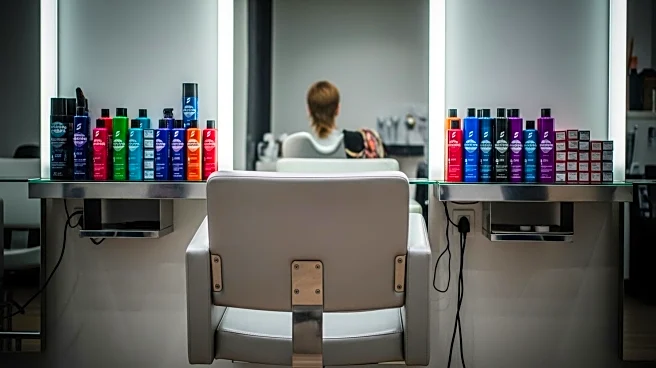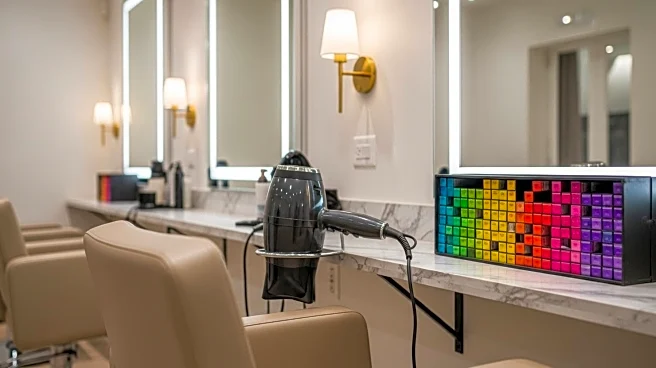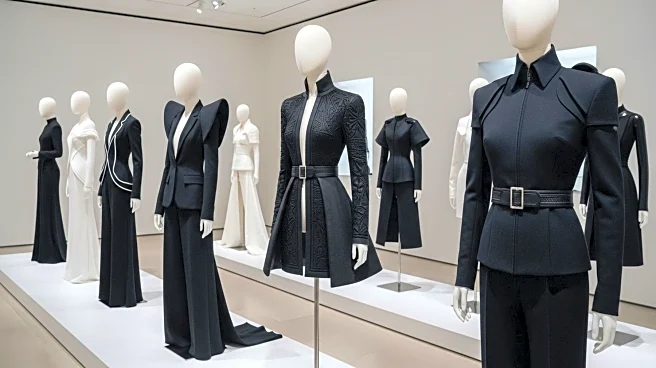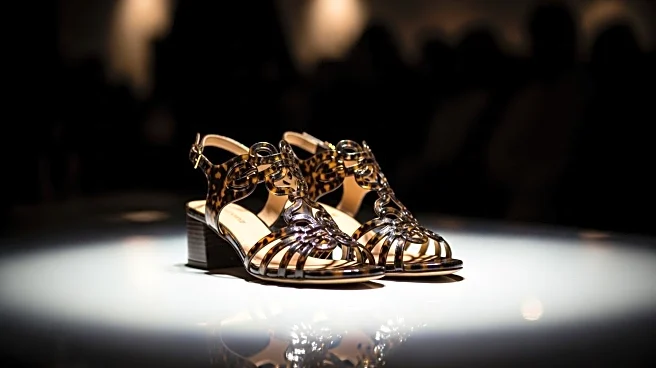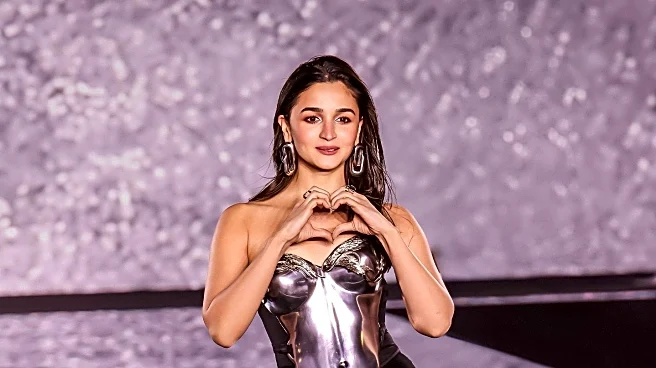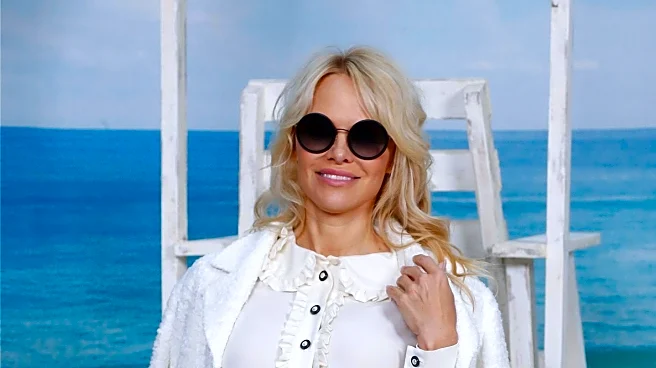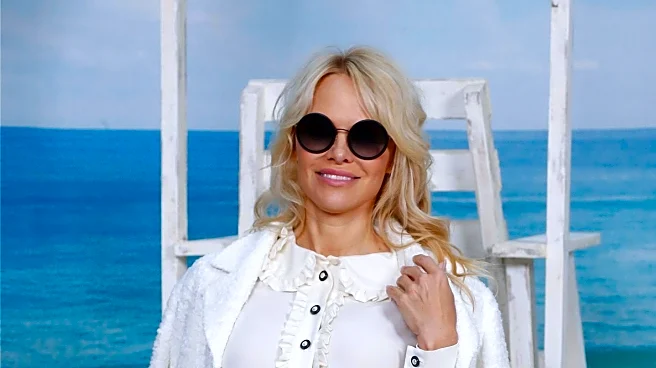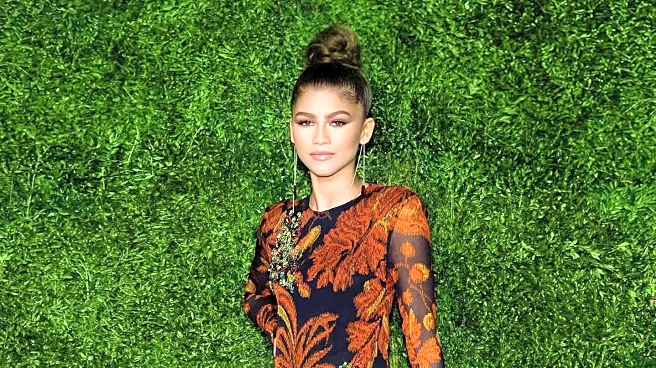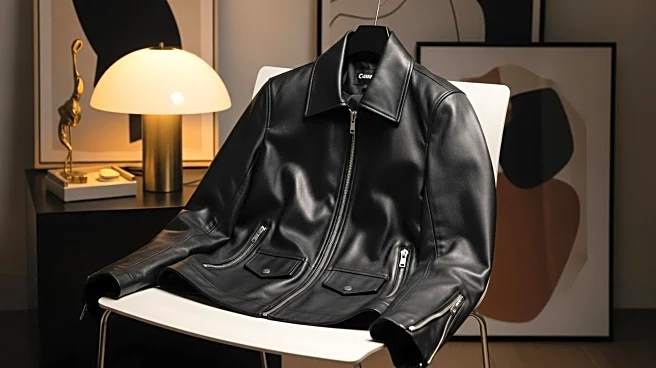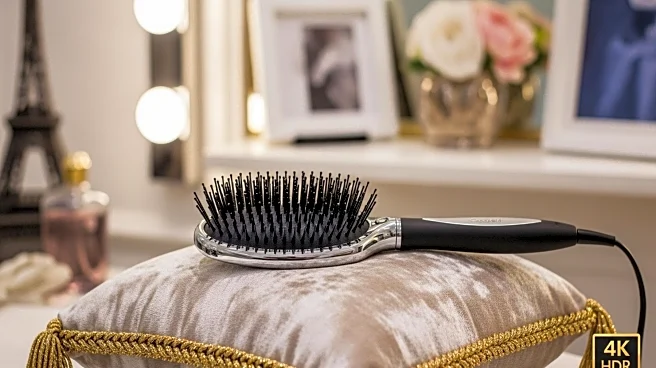What's Happening?
Pamela Anderson has unveiled a new hairstyle during Paris Fashion Week, showcasing a feathered '80s-style haircut inspired by French cinema. Anderson, known for her iconic roles in films like The Naked Gun, surprised attendees at the Mugler show with her fresh coppery hair color and a fun, feathered chop. The haircut features light, airy texture with flippy, feathery fringe, complementing the broad shoulders of her black dress and big gold earrings. Anderson's new look reflects her joyful and rebellious personality, and she hinted at more changes to come, suggesting her hair will be 'different every day.'
Why It's Important?
Pamela Anderson's hairstyle transformation highlights the influence of French cinema on fashion and personal style. Her decision to debut this look during Paris Fashion Week underscores the event's significance as a global platform for fashion innovation and personal expression. Anderson's embrace of a feathered '80s haircut may inspire others to explore retro styles, potentially influencing trends in the beauty and fashion industries. Her playful approach to hair styling also reflects broader cultural shifts towards individuality and experimentation in personal aesthetics.
What's Next?
As Pamela Anderson continues to experiment with her hairstyle, fashion enthusiasts and media outlets will likely keep a close watch on her evolving looks. Her statement about having fun with her hair suggests that more transformations are on the horizon, potentially setting new trends in celebrity hairstyling. The fashion industry may respond by incorporating similar retro-inspired styles into upcoming collections, while fans and followers might seek to emulate Anderson's bold choices, driving demand for hairstyling products and services that support such transformations.
Beyond the Headlines
Pamela Anderson's hairstyle change also touches on the cultural appreciation of French cinema and its impact on personal style. Her choice to draw inspiration from French films highlights the cross-cultural exchange between cinema and fashion, emphasizing the role of media in shaping aesthetic preferences. This development may encourage a deeper exploration of how film and fashion intersect, influencing designers and stylists to incorporate cinematic elements into their work.

